► Levante used to be diesel-only in UK
► Not any more – here’s the petrol V6
► Injects more soul into Maserati’s SUV
A year after our previous drive in the Maserati Levante, and there’s been yet another update. This time, a new 345bhp petrol engine joins the range, but we’re yet to sample that at time of publication.
Instead, here we’re driving the 19MY Levante S with its 424bhp in GranLusso specification – in one of two new triple-layer paint finishes called Blu Nobile – in southern France.
Specifically, its metal flakes glint in the sunlight alongside the 2018 Cannes Yachting Festival, which Maserati’s pumping big money into as it perseveres with its attempt at becoming the brand for discerning yachtspeople. The Multi 70 racing boat Maserati sponsors was also on-hand, and we had a chance to road test that too, but for now let’s get back to business…
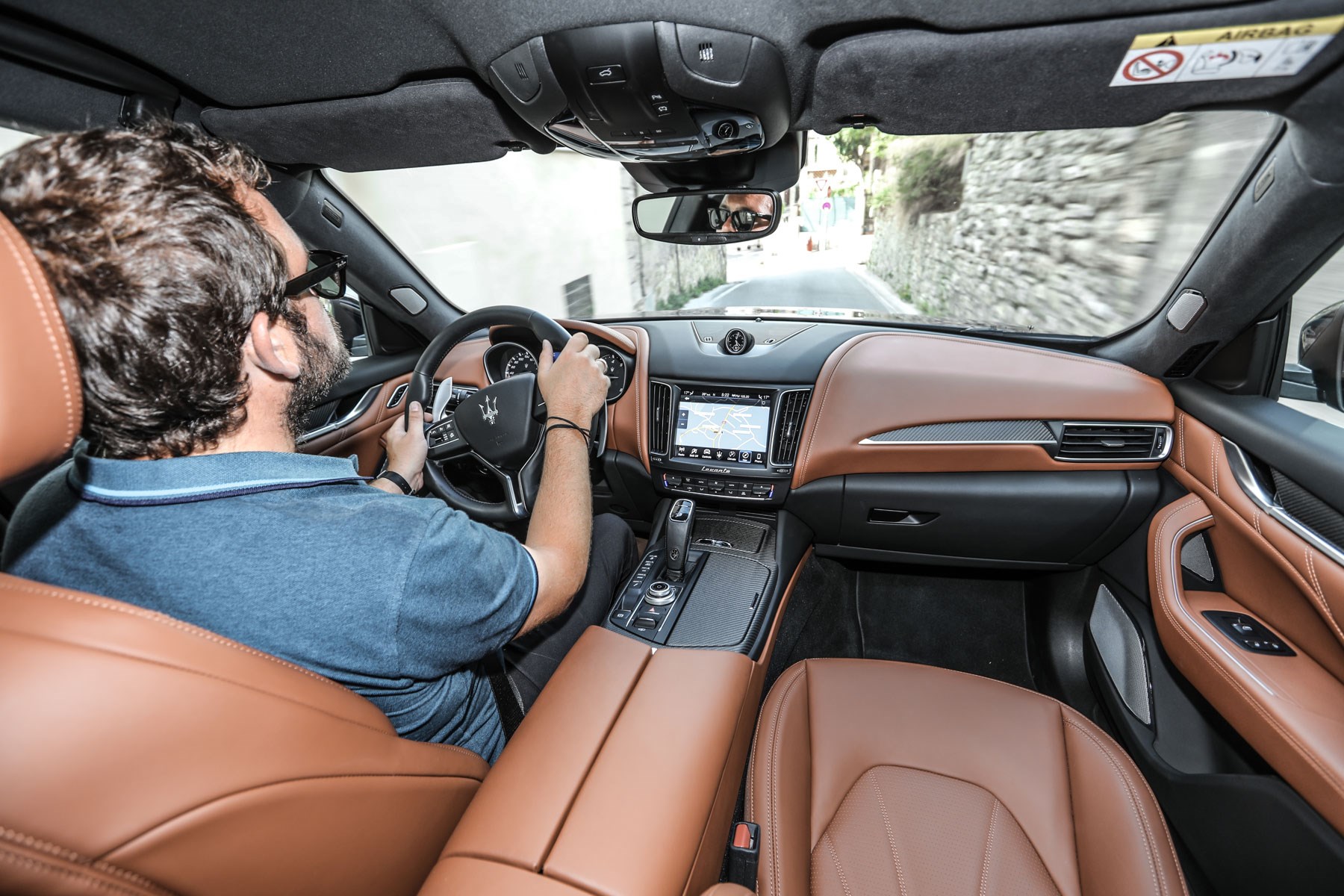
What’s the 2019 Maserati Levante like to drive?
Very much like the 2018 model, and the 2016 one before that. The changes to keep things current are limited to some new graphics for the 8.4-inch infotainment screen, a new gearlever for the eight-speed ZF ‘box, some new interior trims and the decoupling of Sport mode and the magnetic Skyhook suspension’s firmness (meaning you effectively get a ‘bumpy road mode’ like in Ferraris.
There’s a set of new LED headlights available too, but sadly not on our test car.
To drive, there’s really not a lot to note over and above our initial test drive of the Levante S below, though we got more of an opportunity to use the engine and suspension than we did out in the UAE as we grumbled our way out of the city of Cannes towards the region’s mountainous interior.
The facility to disassociate Sport mode from the suspension’s firmness is a welcome addition. It means you’re able to use and enjoy this Ferrari-built V6 without worrying your teeth will fall out on a less-than-perfect road surface. Our car’s 20-inch wheels aren’t the biggest on offer (that’ll be a set of 22s) but soften the magnetic dampers and there are noticeably fewer jolts transmitted through the chassis telegraphing roadway imperfections.

That’s the setting you’ll want to be in for the majority of the time, because while there isn’t a Maserati that’s bad to drive, the extra bodyroll in the taller Levante marks its card as one of the least engaging.
You do still get the column-mounted shifters, a tug on the left hand of which elicits a bark from the V6 as you drop a ratio. It’s all the more theatrical with the exhaust’s valves open in Sport, yet the driveline isn’t too spikey to use this configuration the majority of the time.
The motor is endowed with a decent flexibility that almost – but not quite – feels V8 in its character. You find you don’t have to change gears too often, but in some ways that’s a shame given the pops and bangs when doing so.
Until the as-yet-unconfirmed-for-Europe-but-highly-likely Trofeo arrives on our shores, this is the most interesting Levante around, and if you can’t wait and need an SUV with that Trident on the nose, we don’t think you’ll be disappointed.
Maserati Levante S 2018MY – driven in the desert
When the Maserati Levante launched in 2016 your only engine option in the UK was a VM Motori-built V6 diesel, resigning the Italian Cayenne to almost-but-not-quite-a-real-Maserati status.
But with the addition of the Levante S to right-hand-drive markets following a minor model-year update, now your options have doubled. We headed to the deserts of the United Arab Emirates to answer two very important questions: is the Levante S a truly capable SUV, and is it a proper Maserati?
Well, is the Levante S a proper Maserati?
That depends largely on your idea of ‘proper’. The requisite parts are there or thereabouts, despite its jacked-up appearance. The engine in the S is a real highlight – it’s the same Ferrari-sourced twin-turbo V6 found in the Ghibli and Quattroporte and ergo wonderful to drive.
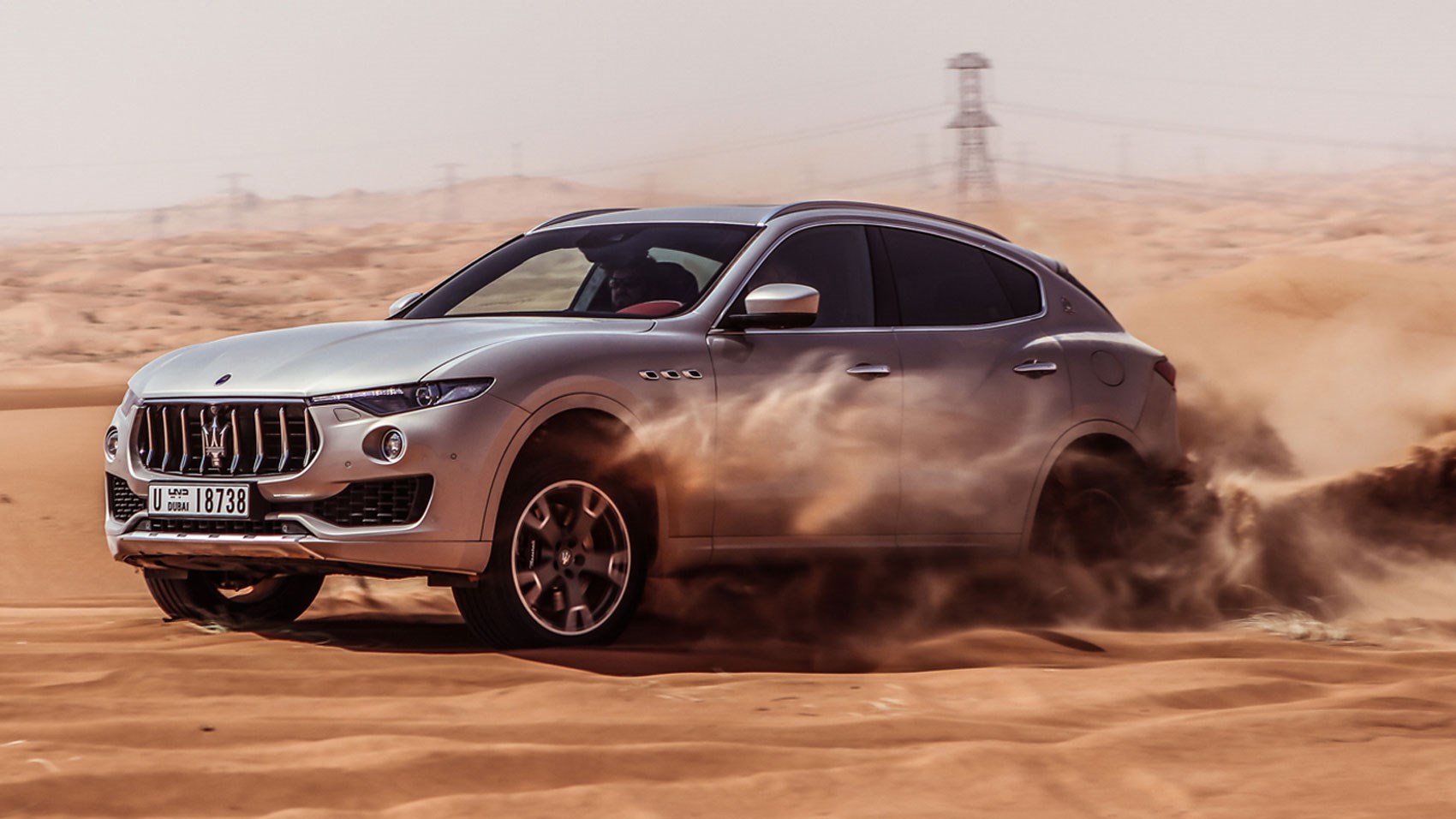
Press a digit against the engine start button and the Levante springs into life with a purposeful grumble. Instantly it’s a titanic leap forward over the diesel – it sounds fabulous, albeit a little too quiet in the car we were driving, which had double-glazed windows. It sounds better from outside.
Pull the gearlever down into D and the ZF eight-speed torque-convertor ‘box selects first gear, ready to crawl out onto the open road for our drive to the sand dune-peppered Fossil Rock.
What else is new?
Electrically assisted power steering – a feature new to Levante but already on the Ghibli and Quattroporte.
The main reason for its addition is to facilitate the all-important driver assistance technology that every company is scrambling to festoon upon their vehicles.
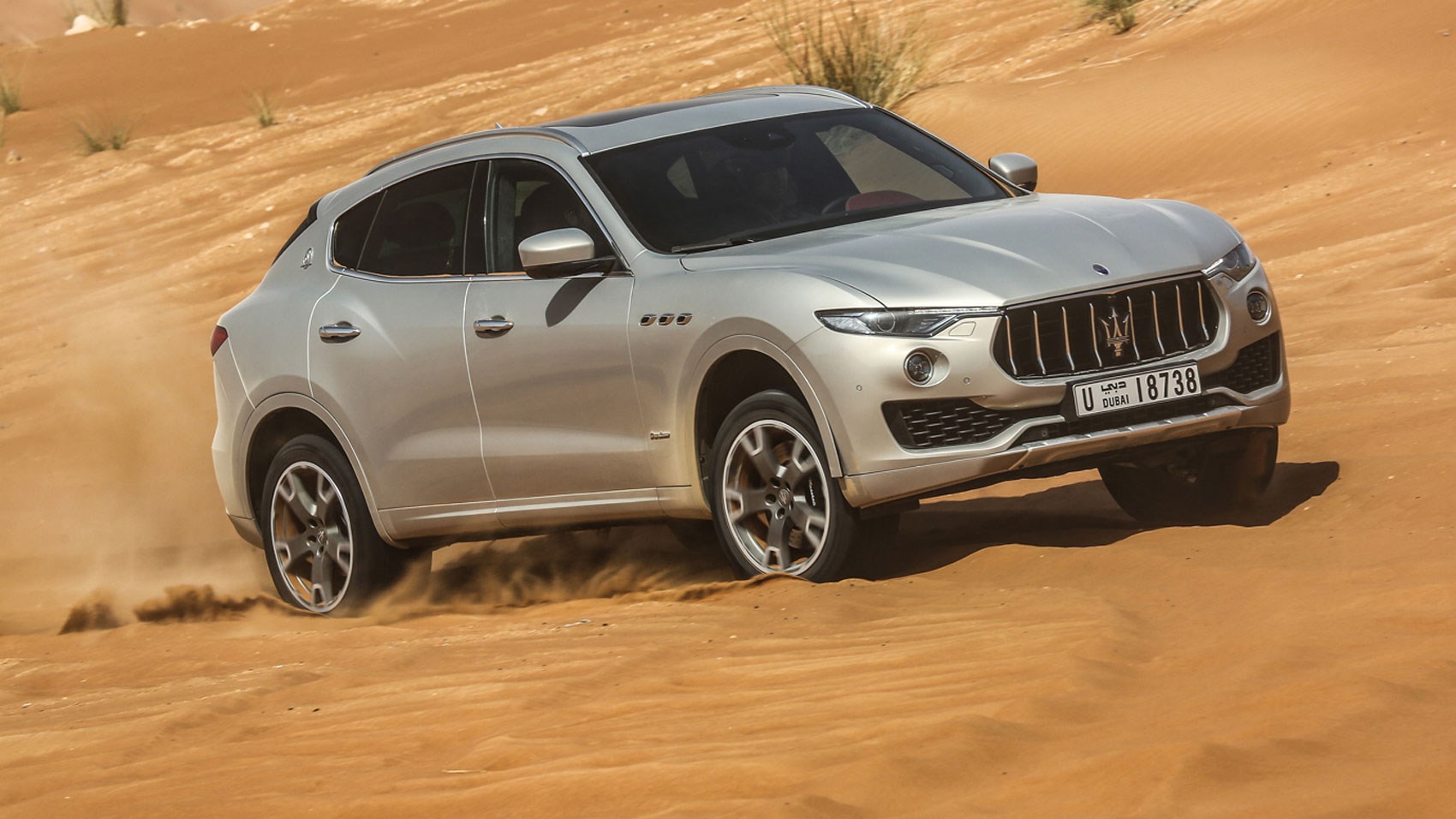
Naturally you might expect this step to be retrograde – Maserati’s hydraulic steering on the GranTurismo is a thing of pure visceral delight – and indeed we approached it with a healthy dollop of scepticism.
However, this set-up is among the best such systems we’ve tried. There’s clearly been a massive amount of time spent tuning the Levante’s helm for both response and weighting, particularly on initial turn-in where many rival cars suffer. The feedback dials back a little at higher speeds, but overall we were very impressed with how immersed we felt in the driving experience.
This is an indication that Bologna’s ethos is still as a builder of performance vehicles, albeit in this case one made more for Dakar dune-bashing than big drifts at Donington Park. There’s even a switch on the driver’s seat base to electrically move the pedals forward and back. Very motorsport.
Dune-bashing, you say?
Yes. Once we arrived at Fossil Rock it was time to head off the bitumen track and out into the desert.
Dropping a bar of pressure from the standard summer tyres to provide a little extra traction, it quickly became obvious just how good this steering system is. The sand in that area of the UAE is incredibly fine – more powder than anything else – and this fluidic surface really got the car moving about.
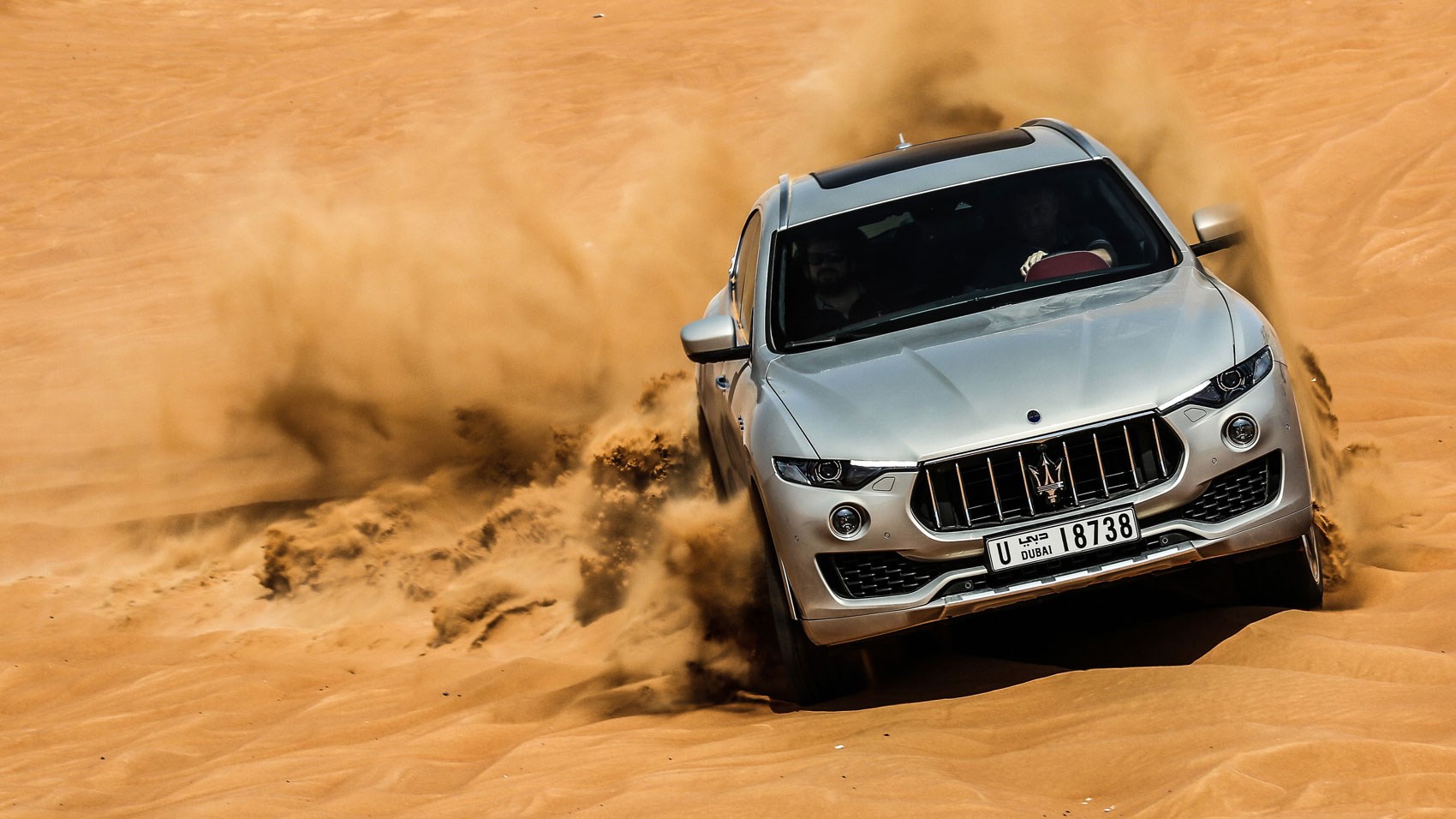
As it slithered up and down smaller dunes, using smooth throttle and steering inputs to prevent the car digging in and beaching on its axles, the rear bias for the AWD system worked cohesively with the steering for predictable and balanced handing, even right at the limit of traction.
Is it a proper off-roader?
It does pretty well. With relatively steep approach and departure angles and the Skyhook suspension set into its tallest Off-road 2 mode (40mm higher ride height – available at speeds up to 25mph), the Levante monstered the sorts of continuous gradient changes the dunes threw at us.
After a period of messing around in the area around the base of Fossil Rock we aimed the Trident badge directly for the summit itself. The Levante’s wheels bit the sand and before we knew it the hill had been conquered. There we stopped to contemplate our car’s performance in the 45-degree heat.
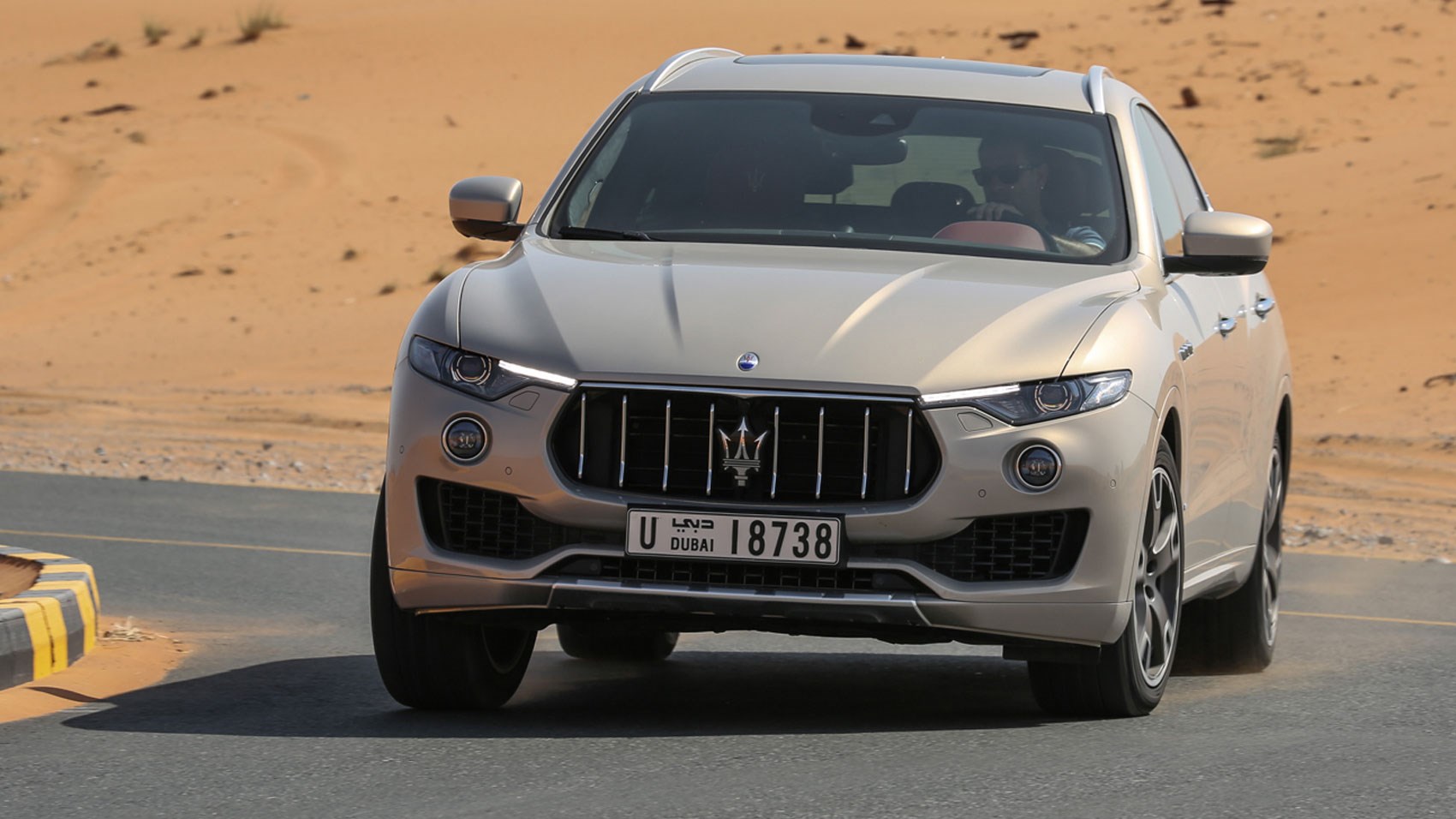
Maserati carried out endurance testing on its first SUV here, and it’s easy to see why. The terrain is remote, rugged and really bloody hot.
Sure, the sort of driving we’d been doing probably wouldn’t have troubled a Range Rover Sport or a Porsche Cayenne either, but it was still an impressive performance made all the fizzier for having an harmonious V6 petrol motor to call upon along with a cabin arguable more fetching than anything off-roader-shaped this side of a Bentley Bentayga.
What spec’s yours in?
Ours was in the more luxurious of the two available trims – GranLusso nets you leather or silk upholstery, soft-close doors, a Harman Kardon hi—fi, metallic finishing for front skid plate and roof rails, black brake calipers and 19-inch wheels.
The other option is GranSport, which gets 20-inch wheels, red calipers and sportier styling accents inside and out.
We mentioned earlier about the Levante’s updated driver-assistance suite, with the latest line-up featuring active lane-keeping and cruise control along with a system to drive for you on the motorway and traffic sign recognition.
On the way back from Fossil Rock to our base in the Al Wadi Desert we hit the highway to test them out. It also gave us a chance to sample the suspension’s Aero 2 setting, which is the opposite of the Off-road modes in that it lowers the car 35mm from its normal 207mm right height, apparently making the car slipperier and thus more stable at speed.

Once we’d got our head around how to stop the car accusatorily beeping every 20 seconds or so as we drove, we uncovered a couple of niggles, but they’re potentially localised to the roads we were driving on.
First of all, the traffic sign recognition didn’t work every time; this is one of those systems that you either want to work 100% or else not have at all. Secondly, the active lane-keep system seemed to want to place the Levante too far over to the right-hand side of the lane and this was disconcerting when overtaking other vehicles.
We can vouch for the handling with the car hunkered into Aero 2, though. Bodyroll was noticeably mitigated and the steering seemed to liven up too, with near-perfect weighting.
Verdict
Everyone’s building premium SUVs these days. Lamborghini and Rolls-Royce are to enter the fray imminently and most other luxury car manufacturers either have or will have a utility vehicle in their line-up.
But the big battle here is not just to build the car, but to somehow endow it with your brand’s core identity – even if that’s as a builder of high-performance sports and GT cars.
Until now the Levante failed to meet that brief, but with the addition of a far more interesting engine coupled with a genuinely capable and technologically interesting chassis, we now have a real Maserati SUV.
We’ll wait with bated breath, then, because the company’s engineers told us the sonorous V8 twin-turbo from the wonderful Quattroporte GTS does indeed fit between the Levante’s suspension turrets… and this could arrive with electrical assistance in the form of a mild hybrid to start lowering Maserati’s fleet-wide CO2 emissions. That sounds like a recipe for something those chaps at SVO should be worried about.